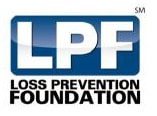Building a successful career in loss prevention has always been predicated on the commitment to professional growth and development. Working in a business as dynamic as retail, it is essential that we remain flexible in our methods and progressive in our approach to a global retail market. As the business moves forward change comes quickly, and our skills and abilities must evolve to meet the needs and expectations of a new professional standard.
But true growth must be built on a solid foundation. Especially when we consider the pace of change, we find that success is largely based on the refinement of the fundamental principles that anchor our skills and our decision making. By expanding on our foundation of knowledge, we give ourselves a stronger and more stable base to build upon. We reinforce our futures by broadening our opportunities.
Leading a Diverse Team
Diversity is not about differences among groups, but rather about differences among individuals. Each individual is unique and does not speak for a particular group. Often we tend to focus on the superficial or shortsighted perspective of diversity—that which we can easily see and differentiate such as gender, race or ethnicity. However, there is a deeper layer of diversity that we must also take into account, those that reflect meaningful, multifaceted issues that can be more difficult to recognize—and often more difficult to understand. Differences in cultures, values and belief systems are also a significant factor in our diversity issues, and must be considered as well.
Leading teams made up of individuals from diverse backgrounds requires that we refine and improve our management techniques in order to make our team more efficient and effective. Team motivation, satisfaction and productivity can hinge on our ability to appropriately and effectively lead a diverse team, improving the overall climate of the workplace, reducing conflicts and improving retention. Recognizing that diversity will bring a greater skill base when managed properly, we can also enhance strategic awareness and encourage our team members to be more innovative and responsive.
Recruiting For Diversity
As we look to recruit diversity candidates into our department, we must begin by creating an environment where diversity is considered to be an important aspect of our workforce and our overall company. There needs to be a buy-in from upper management that it is important and that commitment must be communicated to the entire organization. However, that same commitment must be reflected by the leadership within your department. We have to understand the value of diversity and provide an environment where all types of diversity are not only welcome, but one where they might flourish. Some other recruiting tips include:
• We have to communicate the value of bringing diversity into our department, why it is important and how it can bring a different dimension to improving the overall success of the department. As with any initiative ownership is important, and employees are much more likely to support programs that they understand and believe in.
• We have to be able to identify potential mentors that are currently part of the organization that can provide support and help welcome them into the company structure.
• Identifying and supporting external channels that might support diversity groups is another way that we can help support our diversity employees. There are several professional organizations designed to help specific diversity groups or individuals in general with such issues and transitions, some of whom are specific to the Loss Prevention industry, that can provide guidance and support.
• Offer current diversity associates the opportunity to help recruit talent into the organization. Bring diversity candidates to recruiting functions, job fairs, etc. in order to communicate their experiences with your company and support the recruiting initiative.
• Utilize websites and other media channels that support diversity groups to post employment opportunities as a means to bring additional diversity talent to the forefront.
• Get creative. Be willing to look in what might be considered “non-traditional” areas (business programs, the military, etc) for potential diversity candidates.
• Receiving referrals from other employees that may help identify a potential candidate or talent pool can be a valuable recruiting source.
• Provide a work environment that is more conducive to a diverse environment. (For example, in a male-dominated department creating an office environment where women feel more welcomed and comfortable.)
• We have to learn to be more sensitive to the diversity perspective. This may refer to team dynamics, work/life/family issues (for example, a sick child and family care), and other factors that can accentuate our differences.
• Focus on retention. It does us little good to put effort into attracting diverse candidates into our department if we don’t provide the environment or the resources that make those candidates want to remain as part of our team.
As Loss Prevention professionals, we must make every effort to champion diversity efforts by example and in practice. The way that we approach our working relationships and the way that we interact with each other should reflect a spirit of inclusion and acceptance. Ideally, Loss Prevention departments should echo their company’s goals and standards with regard to diversity. Within the Loss Prevention department, we should promote a balanced and diverse workforce. We should be represented by both men and women on the staff, and promote an environment that encourages and welcomes individuals from all races, cultures, creeds, ethnicity and any and all diverse backgrounds. We should provide an environment where all opinions and ideas are welcome, and all individuals feel comfortable, accepted and appreciated.
By capitalizing on opportunities to enhance our knowledge and education, we are making an investment in our own future. To learn more about developing your leadership skills and the certification process, visit losspreventionfoundation.org.


